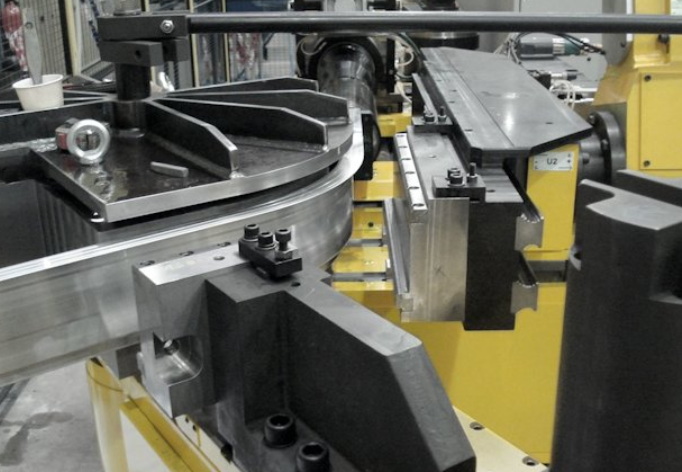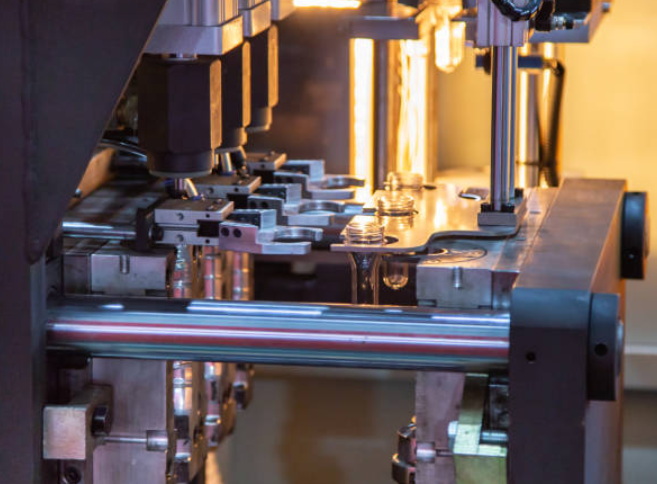Content Menu
● Introduction to Medical Extrusion
>> Key Components of Extrusion Equipment
● Applications of Extrusion Equipment in Medical Devices
● Innovations in Extrusion Technology
>> Multi-Layer Tubing Extrusion
● Benefits of Using Extrusion Equipment for Medical Devices
● Challenges and Future Directions
● Role of Extrusion Equipment in Personalized Medicine
● Extrusion Equipment for Medical Devices: A Global Perspective
● Conclusion
● FAQs
>> 1. What is Medical Extrusion?
>> 2. What Materials Are Used in Medical Extrusion?
>> 3. How Does Extrusion Equipment Enhance Quality Control?
>> 4. What Are the Benefits of Multi-Layer Extrusion?
>> 5. What Regulations Govern Medical Extrusion?
● Citations:
Extrusion equipment plays a pivotal role in the manufacturing of medical devices, particularly in producing high-quality tubing, catheters, and other critical components. The precision and consistency offered by modern extrusion technology are essential for meeting the stringent standards of the medical industry. This article explores how extrusion equipment enhances the quality of medical devices and highlights the key features and innovations in this field.

Introduction to Medical Extrusion
Medical extrusion is a specialized manufacturing process that involves forcing raw materials, typically thermoplastics or elastomers, through a die to create continuous profiles with specific shapes and dimensions. This process is widely used for producing tubing, catheters, seals, and other critical medical parts that require exceptional consistency, biocompatibility, and performance.
Key Components of Extrusion Equipment
1. Extruder: The extruder is the core component of the extrusion line, responsible for melting and shaping the raw materials. Advanced extruders feature precision screws and barrels designed to improve material flow while reducing shear stress, leading to better quality extrusions.
2. Dies: Specialized dies determine the tubing's shape and dimensions. They are crucial for achieving the precise specifications required for medical applications.
3. Calibration Systems: These systems enhance accuracy by maintaining consistent dimensions throughout the extrusion process. Automated calibration equipment further reduces variability and improves production efficiency.
4. Cooling Tanks: Efficient cooling tanks stabilize the tubing post-extrusion, ensuring it retains its intended shape and dimensions. Advanced cooling systems use precise temperature regulation to prevent deformation and ensure uniform cooling across the tubing's surface.
5. Cutting Units: Cutting units guarantee precise tube lengths by utilizing high-speed, automated mechanisms. These systems often incorporate programmable settings to meet various length requirements, ensuring versatility and reducing waste.
Applications of Extrusion Equipment in Medical Devices
Extrusion equipment is used in a wide range of medical applications, including:
- Catheters: These are used for diagnostic and therapeutic procedures where precision dimensions and biocompatibility are needed.
- Intravenous (IV) Lines: These are necessary for directly administering fluids and medications into the bloodstream.
- Peristaltic Pump Tubing: This is used in devices that must move fluids accurately without contaminating them.
- Endotracheal Tubes: These are employed to secure airway patency in patients during surgery or critical care.
- Dialysis Tubing: This is vital to systems designed for filtering toxins from the blood of persons with kidney failure.
Innovations in Extrusion Technology
Recent advancements in extrusion technology have significantly improved the quality and functionality of medical devices:
1. Multi-Layer Extrusion: This technology allows for the creation of complex tubing structures with multiple layers, each serving a specific function such as insulation, reinforcement, or biocompatibility enhancement.
2. Nano-Structured Materials: Incorporating nano-structured materials into the extrusion process can enhance the mechanical properties and biocompatibility of the tubing.
3. Automated Quality Control Systems: Advanced sensors and AI-driven monitoring systems can detect defects in real-time, allowing for immediate adjustments to the extrusion process.
4. 3D Printing Integration: Some factories are integrating 3D printing techniques to create custom connectors or fittings for medical tubes, offering greater flexibility in design and functionality.
5. Sustainable Materials: There is a growing trend towards using sustainable materials in extrusion, which not only reduces environmental impact but also aligns with the increasing demand for eco-friendly medical products.
Multi-Layer Tubing Extrusion
Multi-layer tubing extrusion is particularly beneficial in medical applications. It allows for the creation of tubing with distinct layers that can provide different functionalities, such as a layer for drug delivery or a layer that enhances resistance to chemicals. This technology has opened up new possibilities for developing advanced medical devices that can perform multiple functions simultaneously.

Benefits of Using Extrusion Equipment for Medical Devices
The use of extrusion equipment in medical device manufacturing offers several benefits:
- High Precision: Extrusion technology allows for the production of parts with tight tolerances, ensuring that each component meets the exact specifications required for medical applications.
- Efficiency and Scalability: The process is highly efficient, offering scalability for high-volume production while minimizing material waste.
- Biocompatibility and Safety: Extrusion equipment is designed to work with biocompatible materials, ensuring the safety and reliability of the final products.
- Regulatory Compliance: The process is closely monitored and controlled to ensure compliance with rigorous industry standards, such as ISO 13485 and FDA regulations.
- Cost-Effectiveness: While initial setup costs can be high, extrusion equipment offers long-term cost savings through reduced waste and increased production efficiency.
Challenges and Future Directions
Despite the advancements in extrusion technology, there are ongoing challenges and areas for future development:
- Material Innovation: Continuous research into new materials and their properties is crucial for expanding the capabilities of extrusion equipment.
- Integration with Emerging Technologies: Integrating extrusion with emerging technologies like robotics and AI can further enhance precision and efficiency.
- Sustainability: There is a growing emphasis on sustainability in manufacturing, which includes using eco-friendly materials and reducing energy consumption during the extrusion process.
Role of Extrusion Equipment in Personalized Medicine
Extrusion equipment is also playing a role in personalized medicine by enabling the production of customized medical devices tailored to individual patient needs. This involves creating devices with specific dimensions or properties that match the unique requirements of each patient, enhancing treatment outcomes and patient comfort.
Extrusion Equipment for Medical Devices: A Global Perspective
Globally, the demand for advanced extrusion equipment is increasing as healthcare systems seek to improve patient care through better medical devices. This trend is driven by technological advancements, regulatory pressures, and the need for cost-effective solutions that maintain high quality standards.
Conclusion
Extrusion equipment plays a crucial role in improving the quality of medical devices by providing precision, consistency, and scalability in manufacturing. Innovations in extrusion technology continue to enhance the performance and safety of medical tubing and other critical components. As the medical industry evolves, the demand for advanced extrusion solutions will remain high, driving further innovation and improvement in patient care.

FAQs
1. What is Medical Extrusion?
Medical extrusion is a specialized manufacturing process that creates precise, high-quality medical components and devices by forcing raw materials through a die to produce continuous profiles with specific shapes and dimensions.
2. What Materials Are Used in Medical Extrusion?
Common materials used in medical extrusion include silicone, PVC, polyurethane, and other biocompatible polymers chosen for their durability, flexibility, and compliance with regulatory standards.
3. How Does Extrusion Equipment Enhance Quality Control?
Extrusion equipment enhances quality control through advanced monitoring systems, precise temperature control, and automated calibration, ensuring consistent dimensions and reducing defects.
4. What Are the Benefits of Multi-Layer Extrusion?
Multi-layer extrusion allows for the creation of complex tubing structures with multiple layers, enhancing functionality by providing features like insulation, reinforcement, or improved biocompatibility.
5. What Regulations Govern Medical Extrusion?
Medical extrusion is governed by stringent regulations such as ISO 13485, FDA guidelines, and EU MDR, ensuring that all produced tubing meets international safety and quality standards.
Citations:
[1] https://jieyatwinscrew.com/blog/what-is-a-medical-extruder/
[2] https://aec.org/healthcare
[3] https://www.ap-tech.com/what-is-medical-extrusion-2021/
[4] https://www.alibaba.com/showroom/medical-tube-extrusion-machine.html
[5] https://www.youtube.com/watch?v=2SKQBaAEV_U
[6] https://www.twinscrew.net/en/article/Medical-Tube-Extrusion-101.html
[7] https://jieyatwinscrew.com/blog/medical-tubing-extrusion-equipment/
[8] https://jbmedical.com.au/how-medical-tubing-extrusion-equipment-meets-stringent-standards/
[9] https://www.youtube.com/watch?v=zQaeBN67KWc
[10] https://www.yjing-extrusion.com/how-does-medical-tube-extrusion-machinery-enhance-quality-control.html
[11] https://www.youtube.com/watch?v=CDfozHaewcY
[12] https://seisa.com/capabilities/medical-extrusion/
[13] https://www.bausano.com/en/applications/extrusion-lines-for-medical-sector
[14] https://biomerics.com/medical-extrusion-finding-right-sourcing-partner/
[15] https://www.xtrutech.com/medical-plastics/
[16] https://quasarmedical.com/education/catheter-extrusion-process/
[17] https://eleanoraluminium.com/solutions/electrical-and-medical-applications/
[18] https://www.tomindmed.com/the-le-of-medical-extrusion-in-producing-high-quality-medical-tubing-id40201546.html
[19] https://seisa.com/capabilities/medical-extrusion/
[20] https://www.mpo-mag.com/exceeding-medical-device-extrusion-expectations/
[21] https://www.medicaldesignbriefs.com/component/content/article/46141-how-these-engineered-extrusion-trends-can-improve-device-design-and-patient-experience
[22] https://www.trelleborg.com/en/medical/tools-and-media/news/whitepaper-on-advanced-extrusion-techniques
[23] https://www.mpo-mag.com/extrusion-40-in-medical-device-manufacturing/
[24] https://www.medicaldesignbriefs.com/mdb/topic/materials-manufacturing/tubing-extrusion
[25] https://www.shutterstock.com/search/extrusion-machine
[26] https://www.istockphoto.com/photos/extrusion






















